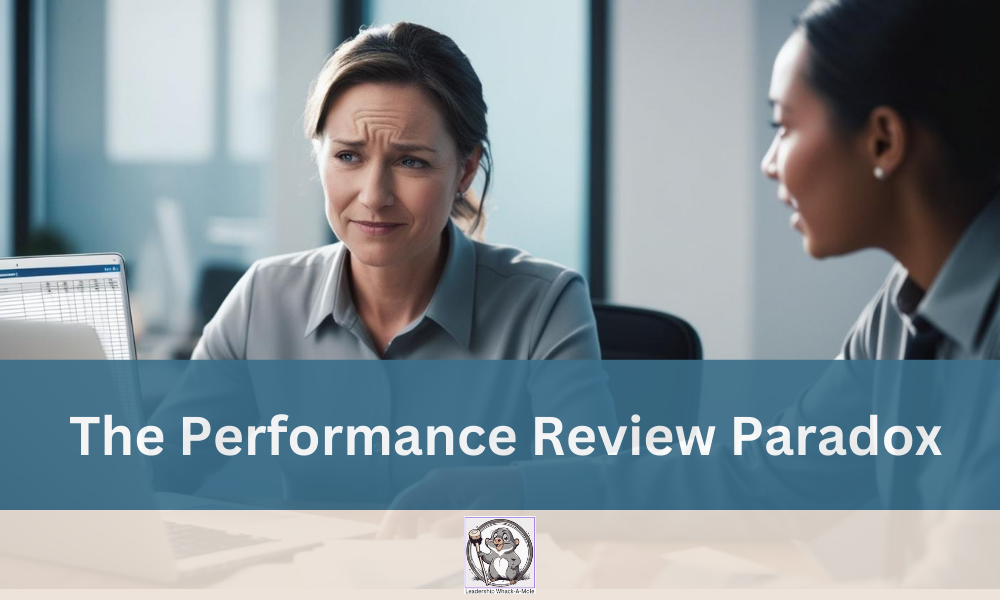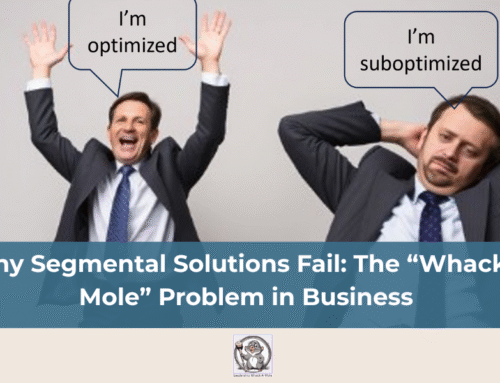
By Ric Shriver
In one of my career leadership roles, I had the opportunity to work under the executive supervision of a well-balanced, objective leader who truly demonstrated a high level of self-respect, respect for the people who reported to him, and respect for the responsibilities within his scope of accountability. At the end of the first annual review period under his direction, I experienced what I felt was a well-balanced assessment of my capabilities, attainment of established goals, and areas for further development in the next review period. One of the five key goals that I had established at the beginning of the review period was not successfully accomplished due to a lack of funding and a reprioritization of goals for the organization. Because it was one of my five key goals, I rated myself, and my managing executive agreed, at 80% for the goal achievement component of the review. While some might argue that the missed goal was beyond my control, I argue that at an executive level we are also responsible for budgeting and planning accurately. As an executive, I chose to assume the responsibility for not having properly planned for that goal. An 80% score, based on my historical assessment of test scores and business performance, would result in a grade of “B minus.” That score kept my overall performance rating for the year from the “exceeds expectations” category, one which typically would be reserved for the top 10% of the performers in the organization. I resolved to plan better for the new year!
Following the closure of the formal performance review process for the organization, our Human Resources Department produced and published a summary of the performance categories achieved by the staff and leadership of the organization during the preceding review period. What I learned was that 44% of us were rated as “meeting expectations” while 52% of the staff and leadership were rated as “exceeds expectations.” I had unknowingly rated myself, with the concurrence of my managing executive, as part of the lower half of performers in the organization. Neither my managing executive nor I had a clue that the results of my review were putting me in the bottom half of the organization’s human talent! I discussed this perceived discrepancy with my managing executive, and he too was not satisfied with the organizational summary of performance of staff and leadership.
As my managing executive and I further discussed and struggled with the overall summary of performance ratings for the organization, we found ourselves perplexed by the fact that against all the desired operating metrics for the organization, we were falling short. Quality outcomes were below par, patient experience scores were mediocre, and employee engagement scores were in the bottom quartile of reported engagement scores for our nationally known survey vendor. Yet, over half of our employee and leadership population was rated as “exceeding expectations.” We obviously had a major disconnect, and some drastic measures needed to be undertaken to focus on impactful performance management!
In our book Leadership Whack-A-Mole, co-author Jeff Fierstein and I elaborate on the dysfunction we often see with formal performance review and appraisal processes. The scenario described below reflects another common problem that we see with many business performance review processes. Jeff’s description of the “equity” imbalance we often see in the performance review process demonstrates a classic and chronic deficiency when it comes to objective performance assessments.
Jeff describes how one co-worker sees himself as a superb performer – always on time, complete, and producing error-free work outputs. He sees himself as a hard worker, one who picks up slack when there is unfinished and/or error-filled work. Upon finishing his formal review with the boss, he fully expects to receive a “5.0” rating on a “5.0” scale, particularly since he knew that a well-known “slacker” in the office had previously boasted that he had earned a “4.0” rating. During his review, the hard-working, productive employee was “awarded” a “4.0” rating which was perceived as a “slap in the face” for the value he felt he was bringing to the organization versus the perceived low performance of the peer. His sentiment is “I do twice as much as you, twice as well, and even do your work, and I get the same rating (and percentage salary increase) as you! That’s not fair; that’s what equity is all about?” Jeff goes on to ask what do you think the high performer will be doing over the next review period. Working his tail off? Helping the low performer out? I think not!
Jeff further proposes that to “correct” flawed performance review tools and processes, we need to appraise the “entire performance system,” not just the performer. Specifically, a focus on problem analysis tools such as cause-and-effect diagramming to identify the “root causes” of performance gaps should be employed. He concludes that by appraising the performance system, we can pinpoint and resolve the root causes of performance deficiencies, thereby identifying the sources of those gaps. He further states that the key to performance system appraisal is gathering the “right” information about how the system achieves its output. This means that all relevant information sources must be included in the review.
We conclude our review of formal performance review and assessment processes by conveying that in the highest performing, most adaptable enterprises, team members focused on key initiatives, projects, or organizational challenges should provide constructive, objective feedback to each other. This team focus ensures that the knowledge, skills, and abilities needed to successfully support each other and the team’s objectives are continuously enhanced through open, transparent, and honest communication. When an organization is demonstrating poor quality, customer service, and low perceived value to the community being served, then the performance review and assessment process needs to be enhanced to drive improvement among all members of the business!
Click on the banner above to view the Leadership Whack-A-Mole book on Amazon
We outline below some common performance review challenges, potential causes of the challenges, and some potential solutions to address those challenges:
| Presented Challenge | Potential Causes | Potential Solutions |
| Reluctance of staff to participate in the process |
Poorly structured tool and/orirrelevant factors to assess
Lack of senior leadership support and enforcement
Poor or inconsistent reporting from HR |
Incorporate job specific, relevant factors to assess; prioritize those factors to focus on what is critical for strong performance
Ensure firm and consistent senior leadership support and enforcement for the process
Ensure accurate completion reporting from HR |
| Disconnect between overall performance ratings and business performance | Poorly structured performance standards, goals, and functional metrics related to desired business outcomes | Inconsistent expectations of senior leaders – varying levels of ability to set clear expectations for performance |
| Perceptions of inequity regarding performance ratings | Poorly defined job performance standards
Poorly defined jobs
Poorly prepared leaders conducting objective, consistent reviews |
Ensure that jobs are well defined and appropriate for the functions and services they are supporting Provide specificity around behavioral expectations for performance
Provide training for all leaders regarding the review process and tools; hold leaders accountable for conducting objective, fair, and consistent reviews |
| Poorly performed feedback | Unrealistic spans of control related to organizational structure
Unprepared, untrained leaders Superficial downloads without authenticity or transparency |
Ensure that leaders have realistic number of direct reports
Provide live training with role-playing incorporated
Incorporate feedback regarding the downloading process into the employee engagement survey – establish development plans for leaders to improve their feedback/coaching skills |




